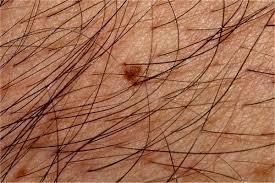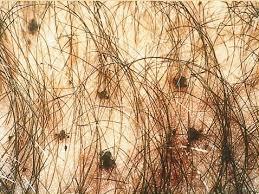Pediculosis
What Is Pediculosis?
Pediculosis is an infection caused by lice. Lice are parasites that live on the outside of a host’s body and usually crawl. They feed on people’s blood after penetrating the skin and inserting saliva.

Pediculosis infestation is common globally. This infestation is usually higher in girls and women. Head louse infestation affects girls more than boys because girls are social. Children between 3-11 years are prone to head lice due to direct contact while in class and in other day care facilities.
Types of Lice
There are different species of lice and each of them feed on different parts of your body. They include
Pediculus capitis
It is also known as head louse; it is the most popular among the three species. It lives in the hair and the head. Head louse spreads through direct contact with shared infected combs, beddings, hats and brushes. When you are combing your hair or removing a sweater, you dislodge the lice from one part of the head to another if they are present.
Pediculus corporis
Also called body louse lives in clothing of people and feeds on the blood at night. Body louse is transmitted from one person to another via direct contact with infected beddings, clothing’s or towel. It can also spread when a person comes into a skin contact with someone whose is infested with body lice.
Pthirus pubis
This louse is mostly found on areas of your body that have hair especially groin or genital areas, abdomen, armpits, eyelashes, eyebrows and chest. Pthirus pubis louse is less mobile and has a large craw to attach on the rough hairs on your body.1
Mode of Transmission
- Pediculosis is transmitted through direct or indirect means. Lice can shift from one person to another through physical contact. Head louse spreads through direct contact with shared infected combs, beddings, hats and brushes.
- Body louse is transmitted from one person to another via direct contact with infested beddings, clothing’s or towel. It can also spread when a person comes into a skin contact with someone whose is infested with body lice.
- Pediculosis can also spread during sexual contact with a partner who has lice in the genital areas (Pthirus pubis).2
Causes
Pediculosis is caused by lice, which are of three species. Each species is responsible for infesting a specific part of your body and they include

- Pediculus humanus var. capitis is responsible for causing Pediculosis Capitis infestation. Pediculus humanus var. capitis suck blood on the scalp of your head. It spreads through head to head contact, combs, hair brushes, hats and clothing.
- Body louse or Pediculosis Corporis infection is caused by Pediculus humanus var. corporis. This louse is found in clothes and thrives when a person uses same clothes for a long time. Pediculosis Corporis infection can be transmitted when you share infested clothing, beddings and towels.
- Body louse is more prevalent in people who have very poor personal hygiene; they do not shower regularly or wash clothes or beddings. Crowded places can also elevate your risk of infestation because you can come in direct contact with people or clothing’s that has lice.
- Phthirus pubis is known to trigger Pediculosis Pubis infestation. This louse lives in the groin places and is transmitted during sexual activity with a partner who is already infested. The infestation can spread when you come in direct contact with infested beddings, clothing’s and towels.1,5
Risk Factors
Several factors can increase your risk of Pediculosis infestation. They include
- People who stay in congested places such as schools and slums are at a higher risk of Pediculosis infestation.
- Individuals with poor personal hygiene; people who wear dirty clothes and do not shower regularly are more likely to have Pediculosis.
- People who lack a permanent dwelling such as street children are more prone to Pediculosis infestation.
- Pastoralist, people who move from one place to another can easily be affected by Pediculosis.
- Women are at a higher risk of being affected by Pediculosis.
- Infestation is prevalent during summer and hotter months.1
Symptoms
Symptoms of Pediculosis differ and depend on the type of lice causing the infestation. But strong itching sensation where the lice suck blood is a common symptom across the lice infestation. The following are the signs and symptoms of Pediculosis:2
Head lice or Pediculus capitis infestation exhibits the following signs and symptoms3
- The place where louse sucks blood appears torn on people’s skin. The infested hair smells bad; usually a foul smell. Noticeable rashes on the trunk and lymph nodes can become enlarged in an unusual manner.
Body louse infestation is characterized by the following
- Scar on the skin as well as the skin is dry with scales.
- Small and red swellings can form on your trunk and shoulders
- Other infections such as from bacteria are also common.
- In severe cases, you may have fever, headache accompanying these symptoms.
For Pediculus pubis infestation, skin becomes irritated as well as small gray and blue spots can form on your thighs and genitals.
Diagnosis
Pediculus is diagnosed through a comprehensive physical examination and your medical history. A physical exam involves the following
- Check your genital area for the presence of white eggs which may be attached to the hair.
- A high energy magnifying glass can be used to check eyelashes of children.
Treatment
Managing pediculus involves use of medications and environmental regulatory measures to maintain good hygiene standards. The following can be used
Shampoos that have pyrethrins can be bought over-the –counter to treat head lice or Pediculus capitis.
- Your doctor will prescribe lindane shampoos to treat pediculus infestation. This can only be used after prescription from health professional. Lindane shampoos shoud not be used by breastfeeding women, infants and young children.
- Use nit combs to remove lice in your hair.
- Use hot water to wash clothing’s, beddings and towels and dry them for approximately 20 minutes.
- Wash the combs and brushes regularly and vacuum the house of the patient to get rid of lice.
- Avoid sharing clothing’s, towels, combs, hair brushes and beddings.
- Sensitize people on lice; spread, treatment options and good hygiene will go along way of preventing lice infestation.4
Reference list
- Pediculosis http://www.dovemed.com/diseases-conditions/pediculosis/
- http://emedicine.medscape.com/article/225013-overview#a4
- Head lice https://www.skinsight.com/skin-conditions/child/pediculosis-capitis-head-lice
- Pediculosis Treatment http://www.airalle.com/pediculosis-treatment/
- http://apps.who.int/medicinedocs/en/d/Jh2918e/3.html
